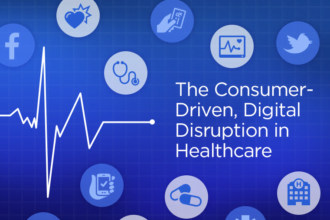Patient centricity has become a buzzword in the clinical trial industry ? but what does it really mean?
These days, everyone seems to be talking about ?patient centricity? in clinical trials; however, I?m not sure that everyone fully grasps the meaning ? and the importance ? of this concept. For many, patient centricity or patient engagement may simply mean providing patients with basic information via a website, email, text, etc. In other words, it?s often a one-sided conversation. I recently came across an interview with Dr. John Whyte, the FDA?s Director of Professional Affairs and Stakeholder Engagement, in which he provides a more useful definition. According to Whyte, ?Patient engagement is about two-way communication, especially as it relates to trial design. It is about, early on, figuring out what your endpoints are and how you determine them with the patient in mind.? This concept isn?t exactly new ? consumer markets have been employing it for years, recognizing the impact of the internet and search early on, then adapting their marketing and engagement strategies to suit this new breed of ?empowered consumers.? But importantly, the goal of patient centricity isn?t just to speed up the drug approval process ? it?s a long-term strategy. Improving communication and the overall patient experience will undoubtedly enhance the reputation of clinical trials, which in turn will bolster patient and physician referrals, patient retention, and ultimately, cost efficiency. In this three-part series, we?ll explore some of the latest patient-centric tactics and technologies that are reshaping the clinical research landscape for sponsors and patients alike.
Why (and How) Do Patients Enroll in Clinical Trials?
True patient centricity demands a nuanced understanding of a patient?s mindset throughout his or her path to treatment. Why do patients choose to enroll in trials? What are the steps they take that lead them to that decision? Patients who sign up for clinical studies may be motivated by any number of factors, from financial considerations to sheer altruism. While the drivers may be varied, the path to treatment is typically the same: patients today invest a significant amount of time and energy conducting research online, learning everything they can about their condition, various treatment options (along with typical outcomes and potential side effects), trial locations, patient testimonials from similar trials, etc. For this reason, relying on traditional methods of recruitment, such as patient databases, is no longer enough. Just like in the path to purchasing a product, patients want to make their own decisions ? it?s the sponsor?s responsibility not only to ensure their trial is highly visible among the target patient demographic, but also that those patients have seamless access to all of the information they need to make a decision, or have a meaningful conversation with their doctor.
Improving Communication
In the past, the primary approach to clinical trial marketing was to focus on the physicians, who in turn would share the information with their patients. However, as patients become increasingly empowered, this model is becoming less and less effective. As a recent NIH article points out, the industry needs to adopt innovative tools and technologies designed to facilitate more meaningful, two-way communication between companies and consumers. For example, some companies are employing social listening techniques to monitor patient discussions online ? this allows for a more nuanced understanding of the mindset and some of the key issues for that particular demographic, which can then be used to drive better participation, retention, and relationships. Moreover, recent research from Tufts CSDD suggests that today, less than 0.2% of nurses and doctors actively refer patients to clinical studies. What?s behind this trend? Poor communication. The study found that ?nearly 30% of physicians and 45% of nurses reported never receiving initial or follow-up contact from investigative site staff following a referral, and a higher percentage reported never receiving their patients? clinical trial results.? Put simply, social media and the internet have made communication, personalization, and seamless access to information baseline expectations for patients and physicians alike. Sponsors need to ensure that the necessary channels (and materials) are accessible and intuitive if they want to keep their heads above water.








